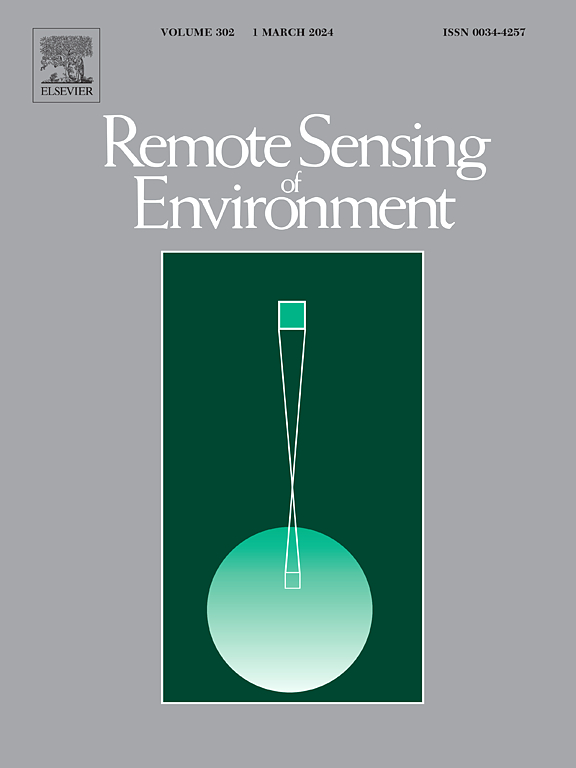Evaluating the potential of handheld mobile laser scanning for an operational inclusion in a national forest inventory – A Swiss case study
IF 11.1
1区 地球科学
Q1 ENVIRONMENTAL SCIENCES
引用次数: 0
Abstract
Close-range remote sensing technologies show great potential to support national forest inventories (NFIs). Mobile laser scanning (MLS) has performed especially well in recent studies, as it is capable of fast data acquisition while still delivering accurate information on NFI-relevant variables (e.g. tree position, diameter at breast height [DBH]). However, the performance of MLS acquisition under challenging conditions (e.g. steep terrain, dense understorey vegetation) has rarely been addressed. Here, on 29 NFI plots distributed over the entire country of Switzerland and representing various terrain and forest conditions, we evaluated the use and performance of handheld MLS acquisition, using a GeoSLAM ZebHorizon laser scanner, to deliver analysis-ready (with minimal occlusion) point clouds and to estimate primary tree variables such as tree position and DBH. Data acquisition was successful for all tested Swiss NFI plots. The average time needed for point cloud acquisition of a 50 × 50 m sample plot was 13.13 min. Over all tested NFI plots, we achieved a tree detection rate of 82.6%, with a relative root mean square error (RMSE) of 7.25%, a mean absolute error of 2.0 cm and a systematic prediction error (SPE) of 1.0 cm for DBH estimation. The terrain gradient had an especially strong influence on the accuracy of DBH estimation. Occlusion, as a metric for point cloud capacity to hold forest structural information for the entire canopy volume, was minimal when the suggested acquisition pattern was followed, at 9% on average for the entire canopy volume. However, the level of occlusion increased in the upper part of the canopy ( 10 m above ground), to 15% on average.
Overall, handheld MLS effectively produced analysis-ready point clouds within the 15-minute acquisition time limitation for a 50 x 50 m area, even under challenging conditions, showing promise for future use in the Swiss NFI. However, the current accuracy of MLS-estimated forest variables like DBH and tree detection is insufficient to replace conventional measurements within an established NFI. Despite this, estimating NFI-relevant variables, even with lower accuracy, and expanding the area of measured tree variables could improve information on forest functions and services (e.g., protection and biodiversity), currently not possible to derive from NFI data due to the limited plot size. In the future, MLS-acquired point clouds could (1) shift from expert-assessed to more quantitative and reproducible variable estimation, and (2) enhance NFI with variables difficult to measure conventionally. This could open new pathways for assessing and monitoring forest structural diversity nationally and provide valuable calibration and validation data for large-scale forest assessments from airborne or space-borne acquisitions.
求助全文
约1分钟内获得全文
求助全文
来源期刊

Remote Sensing of Environment
环境科学-成像科学与照相技术
CiteScore
25.10
自引率
8.90%
发文量
455
审稿时长
53 days
期刊介绍:
Remote Sensing of Environment (RSE) serves the Earth observation community by disseminating results on the theory, science, applications, and technology that contribute to advancing the field of remote sensing. With a thoroughly interdisciplinary approach, RSE encompasses terrestrial, oceanic, and atmospheric sensing.
The journal emphasizes biophysical and quantitative approaches to remote sensing at local to global scales, covering a diverse range of applications and techniques.
RSE serves as a vital platform for the exchange of knowledge and advancements in the dynamic field of remote sensing.
 求助内容:
求助内容: 应助结果提醒方式:
应助结果提醒方式:


